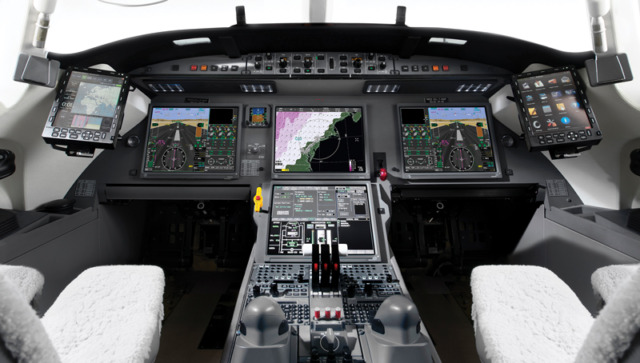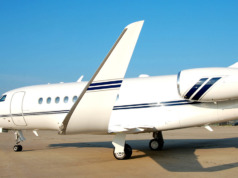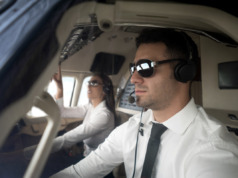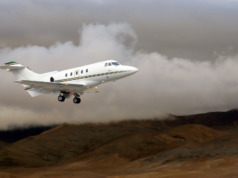
The sky is undergoing an invisible construction project. The aerial overhaul NextGen uses new technologies to modernize the U.S. National Airspace System. Bouncing radio waves off fast-moving objects over great distances is no longer the best way to track aircraft. Today’s GPS systems and autopilots offer a compelling new self-awareness for aircraft and crew. Sharing precisely with others where they are and what they’re doing results in a significantly more efficient – and safer – sky.
Imagine a crowd of people leaving a stadium, each with his or her own larger or smaller personal space, and where no one can ever touch!
Those needing more personal space block the flow of the crowd and slow the exodus. They’re like aircraft with older equipment relying on older technologies. While their whereabouts are generally known, they must be given space or risk a collision.
Those requiring smaller space are like modern or upgraded aircraft flown by well-trained crews. Their position and movement are communicated automatically and accurately to controllers and nearby aircraft, allowing other aircraft so-equipped to be safely spaced closer together, increasing the efficiency of the airspace and the volume of traffic that can be handled.
What Technology Makes This Possible? What Does Your Flight Deck Need?
- WAAS (Wide Area Augmentation System) – Combining GPS satellites with ground stations that check and correct the aircraft’s position makes a WAAS GPS accurate to within three meters. The revolutionary improvement over legacy ground-based radar tracking methods allows controllers to trust in your position, enabling more direct flight routing. Without the old-school zig-zagging over ground radio stations, your flight time is shorter, your fuel bill and carbon footprint are smaller, and you’ll have a lower time aircraft incurring fewer routine inspections while commanding a higher resale value.
- LPV (Localizer Performance with Vertical Guidance) uses WAAS for landing. The accurate GPS signal and a database of virtual programmed approaches in three dimensions typically leads your flight crew to just 200-250 feet above the runway. The precision gets you as close to home as possible, even in bad weather, avoiding diversions to larger airports and time-consuming ground transportation.
- RNP (Required Navigational Performance) defines the accuracy necessary to access certain airspace and perform specific procedures. The aircraft’s navigation system must be able to calculate and monitor its position relative to other aircraft within a defined distance. The higher the air space traffic density, the smaller the distance required. With an accurate RNP approval, you are allowed into the desired airspace, and can expect direct routing without time-consuming step-downs and circling approaches.
- Both FANS (Future Air Navigation System) and CPDLC (Controller Pilot Data Link Communications) are about texting for aircraft. Trying to figure out a fast-talking controller with a regional accent over a squelchy radio in a noisy cabin introduces multiple opportunities for error. Digital communication is easier, safer, and more accurate, as your pilots get a text with the exact ATC clearance. They can press a button to acknowledge and load ATC clearances to the navigation system directly.
- ADS-B (Automatic Dependent Surveillance-Broadcast) – Installing equipment that combines the accurate signal of a WAAS GPS with a transponder that automatically communicates position, altitude, velocity, and flight ID to Air Traffic Control, makes your aircraft in compliance with the upcoming mandate, ADS-B Out. Controllers get updates every second versus five to twelve seconds, to safely route aircraft closer together. The resulting airspace capacity increase means fewer holds, diversions, and problems, with better routing to save time and money. ADS-B In follows and adds communicating with nearby aircraft as well as with free traffic and weather information.
Pilots can be only as accurate as the instruments available to them. The technology you install on the flight deck has a growing impact on the capabilities of your aircraft. BAA
Randy Deal is Business Development and Marketing Director at Signature TECHNICAir. With 20 years of maintenance and modification expertise, he holds a BS in Aeronautical Technology, Airframe & Powerplant license, and a private pilot certificate.





Outstanding article Randy. Well done sir!
Very informative Mr. Deal, thanks!